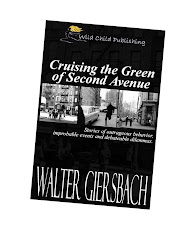Homes Away from Home In the days of unpaved roads and an absence of hotels, taverns served as both hostelry and “watering hole.” Today, you can still note the abundance of places in New Jersey named for one-time taverns. Burnt Tavern Road in Brick Twsp., Stump Tavern Rd. in Jackson Twsp., Bear Tavern Rd. in West Trenton, and Boyd’s Tavern in Whiting; Four Mile, Old Halfway, Three Tuns, and Ong’s Hat were named for taverns in unincorporated areas of Union County.
In 1717, the Colts Neck Inn was built by a Laird ancestor as a way station for coaches and dispatch riders between Amboy and Freehold.
In 1850, the New Jersey Legislature created Ocean County out of the southern half of Monmouth County. The first organizational meeting was held at Thomas P. Barkalow’s tavern on the corner of Main and Water Sts. in Toms River. Much of the meeting concerned building a Greek Revival-style courthouse modeled after that of Hudson County. After the building was completed in 1851, the plans were entrusted to a local man to be returned to Hudson County. He didn’t get far out of town, on horseback, before stopping at Hyers Tavern in Jackson. The plans were never seen again. 6
The Ocean House Hotel (earlier known as the Toms River Inn) began as Barkalow’s Tavern about 1787, and served as a coach stop between Freehold and Tuckerton, as well as west to Burlington County and Philadelphia. It was here that Ulysses S. Grant dictated part of his memoir. Ocean House was demolished in 1952, but the oldest portion was saved and relocated as The Old Time Tavern to Main St. (Route 166) and Presidential Blvd. 7
Taverns were a basic element of New Jersey’s development. Haddonfield’s Indian King Tavern is one of the state’s more important historic buildings. In 1777, as the Continental and British armies devastated Trenton, the Assembly convened there to officially create an independent state and adopt its Great Seal. Legend has it that Dolley Madison, née Payne, was a frequent visitor. 8.
The Merchants & Drovers Tavern Museum Association maintains another stopping-off place, a tavern built in 1798 at the corner of St. Georges Ave. (Rt. 27) and Westfield Ave. in Rahway. The Association also owns and operates the Abraham Terrill Tavern behind the Merchants & Drovers. 9.
And in our own neighborhood, Moore’s Tavern at 402 Main St. (Rt. 537) in Freehold dates back to the Revolutionary War. Moses Mount, an aide to General Washington, returned to Freehold after the war and built this inn for tired travelers. 10
An Army Marching … Sort of The immigration of Scotch-Irish in the 1730s dealt a blow to rum being shipped inland. These new Americans had their own taste for grain alcohol, brought their distilling skills with them, and accelerated the movement toward whiskey. The American Revolution further sped up the migration to corn and grain whiskey as imports disappeared. Royal Navy blockades effectively stemmed the importation of rum and molasses, while American grain was plentiful. A single bushel of corn, for instance, yielded three gallons of whiskey.
Liquor historically played an infamous hand in reducing militia drills to bumbling demonstrations. While training was crucial, many drill sessions were mostly social gatherings with liquor as a central focus. An 18th-century Virginia militia commander recalled that he frequently gave his men alcohol and that afterward “they would…come before his door and fire guns in token of their gratitude, and then he would give them punch ’til they dispersed.” While this kept morale high, it did not build crack regiments. (In the 1600s, Governor John Winthrop of Massachusetts saw a sober drill on Boston Commons and was especially pleased.”)
Before and during the Revolution, inns were favorite places for political discussion, they served as rallying points for the militia, and became recruiting stations for the Continental army. During the war, Ethan Allen held the equivalent of senior management meetings at the Equinox Hotel in Manchester, Vt.
One of the biggest consumers of whiskey was the Continental Army itself. Soldiers were given a daily liquor ration of roughly four ounces. 11
A good soldier follows his senior officer, and in this case George Washington, the distiller of Mt. Vernon, was the model. Washington worried in writing about the morale and condition of his troops. To comfort them “when they are marching in hot or Cold weather, in Camp in Wet, on fatigue or in Working Parties,” Washington said it was “essential” that troops have “moderate supplies” of whiskey. 12
6 The Ocean County Bar Association. http://www.oceancountybar.org/link.php?link=ninetenth_century_725
7 Sadly, time ran out for the renamed Old Time Tavern, and it was destroyed. The Asbury Park Press on Dec. 17, 2008, wrote a feature on the demise of this tavern in order to widen Route 166. http://forum.aboutnewjersey.com/showthread.php?t=5129
8 http://www.levins.com/tavern.html.
9 http://www.merchantsanddrovers.org/ and http://www.hmdb.org/marker.asp?marker=7808.
10 Moore’s was modernized in 2009, with wi-fi, 14 HD flat screen TVs, and serves today as a sports bar. The original architecture, however, has been preserved. http://www.moorestavern.com/
11 DUI.com’s Web site provides a lengthy history, Drinking in America: A History, by Mark Edward Lender and James Kirby Martin, The Free Press, 1982, a division of Macmillian Publishing Co. Inc. During the war, profits were very attractive to distillers, whiskey was easy to transport, and it kept longer than grain. In fact, so much grain was directed to distilling that it began to concern the Continental Congress. http://www.dui.com/dui-library/studies/research/history-of-drinking
12 http://www.hoboes.com/Politics/Prohibition/Notes/Drinking/
Sunday, March 20, 2011
Subscribe to:
Post Comments (Atom)



No comments:
Post a Comment